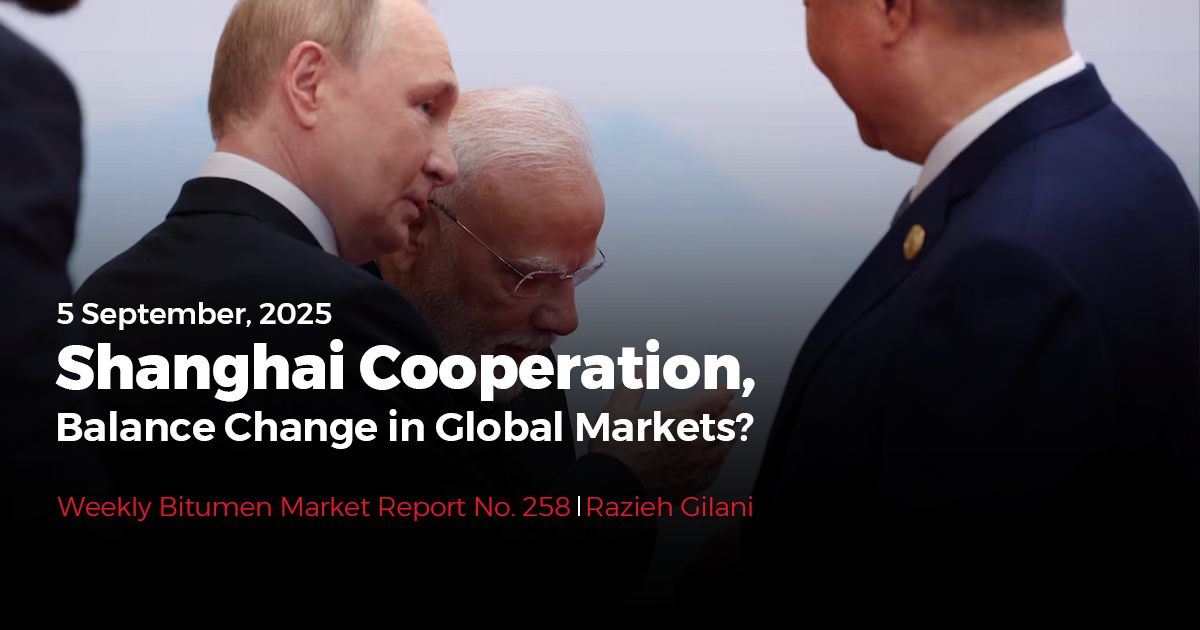Weekly Bitumen Report: Fall in Oil Prices and Reduction of Global Demand, along with Bandar Abbas Disaster

The second term of Donald Trump’s presidency lasted over 100 days. During this time, his main concerns were imposing sanctions against Iran, escalating the trade war with China, and putting pressure on OPEC+ to reduce oil prices. At the same time, his unconditional support from Israel and attempts to symbolically end the Russia—Ukraine war were emphasized.
Besides, after months of intense and tense negotiations, which even led to a verbal confrontation between the leaders of the United States and Ukraine at the White House, on Wednesday, the United States Secretary of the Treasury announced that a new historical–economic cooperation agreement was signed between the U.S. and Ukraine giving the US access to Ukraine’s valuable rare minerals in a deal that Ukraine hopes will ensure continued American support for Kyiv in its war with Russia.
Despite the scattered attacks of Israel on Gaza, the continuity of martial tension in the Red Sea, and ambiguity in negotiations between Iran and America, the oil market did not show any significant sign of these incidents. It seems that economic factors like weak demand and pressure on supply had stronger impacts on the prices and even the geopolitical news could not recover the increasing trend of the market.
During the last week, the energy market encountered one of its most unstable periods during the last 3 years. With the fall to $61-65, Brent crude oil experienced its heaviest weekly fall since 2021. The fall was mainly under the influence of economic and structural factors rather than geopolitical ones. The analysts believe that the increase in oil reserves, the possibility of oil production by OPEC+, and the demand fall from China were the main reasons for the price fall. Contrary to expectations at the beginning of the year, China’s economy has recently faced relative stagnation and a sharp decline in industrial fuel consumption, and it seems that the country will account for a smaller share of global oil demand growth in 2025.
In the meantime, the public analyses in the international media warn that if the current situation stabilizes, oil prices might fall below $60. However, there are no certain predictions in the currently unstable market.
On Thursday, Singapore’s 180CST closed at $417. Bitumen prices in Singapore and South Korea were $405 and $385, respectively.
In Bahrain, bitumen price is fixed at $370 and the range of prices in Europe was stable at $410-440.
On May 1, bitumen prices in India faced a drop of $7 and $8 for VG30 and VG40, respectively. This fall was predictable considering oil prices and the technical conditions of the market.
The mass fire and human disaster in Shahid Rajaei port of Iran led to the death and injuries of many staff at the port. The port was closed for 2 days to put out the fire, later, it reopened. However, numerous containers were badly damaged and there is no clear estimation of damages. As a result of this blast, the port operations are going on slowly.
This damage and the decline in the value of the dollar have led to changes in bitumen prices that were not in line with the current oil price conditions. Nevertheless, we should expect new changes in Iran next week.
To check the latest bitumen prices at different destinations, check the Infinity Galaxy website: https://infinitygalaxy.org/bitumen-price-today/.
This article was prepared by Razieh Gilani, the export manager of Infinity Galaxy.






